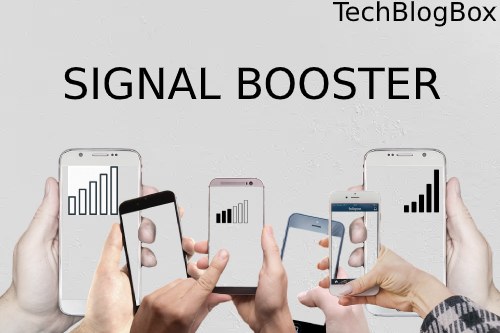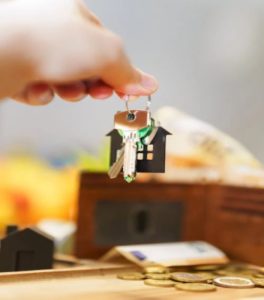Do cell phone signal booster work?

A cell phone signal booster contains three main parts: an external antenna, an amplifier, and an internal antenna. They form a wireless system to improve cell reception.
A cell phone reception amplifier is usually a repeater system in which the amplifier adds amplification or power to the reception in different directions. Even for an inexpensive cell phone signal booster, the maximum gain differs depending on the application. The job of an outdoor antenna is to receive and transmit signals with performance and sensitivity to a cell tower. Usually, the dB gain is never less than 7 dB and can be greater than 10 dB. The line of elements of the system is the coaxial cable. It is also a factor in transmission loss.
The primary purpose of the cell phone signal booster is to pick up and amplify the existing cell phone signal in your car, office, workplace, or home. After amplification, the signal retransmits into the area with no reception or weak signal. In addition to an amplifier to improve reception, an external antenna and an internal antenna, there are cell phone amplifiers with an indoor antenna and amplifier in one unit, which makes it an excellent signal amplifier for indoor spaces. In most cases, all three components separates. Further optional features are the attenuator, the overvoltage protection, the distributor, and the valve.
Table of Contents
It Is How an Amplifier Works for Receiving Mobile Phones.
A Sprint signal booster for cell phones and repeaters for other network operators used in places where cell phone reception is poor. Cell phone signal strength is usually affects due to various obstacles. It includes natural barriers such as trees, construction materials in buildings and hills, and distance. It is where the receive amplification system comes in. Note that a cell phone signal refers to the signal strength, calculated in dBm, that a cellular network sends to the cell phone.
First, the reception of the mobile phone detects by the external antenna. It amplified by the cell amplifier and transmitted again through the building or the car via the indoor antenna. The result improves cell phone reception that results in more bars in your phone even in the most remote locations. So, you can enjoy more explicit calls (you will not drop them again), faster web surfing, and faster data downloads and uploads. It is how the signal booster for cell phones works in your car or at home. It is how all signal amplifiers works in all technology networks, including GSM, CDMA, TDMA, EVDO, UMTS, HSPA + and the latest LTE.
All we Boost and Wilson repeaters, including signal booster systems, work with virtually all mobile operators in North America, especially Canada and the United States. Boosters also work with all types of cellular devices. The data and voice speeds of 2G voice, 3G data and 4G LTE networks increase depending on the booster selected.
Also Read: My Phone Is Hacked. How To Find Who Hacked Your Phone?
Benefits
The strong connection is that it adds 180 minutes of extra talk time to the battery life of phone. You can choose a mobile signal booster which will increase the signal strength of different phones at the same time.
The signal strength states to the strength of the electric field at a reference point that is somewhat far from the transmitting antenna. The signal strength is also referred to as field strength. When you speak on your phone, the mobile device converts the voice into electrical signals and transmits it in the method of radio waves. The phone of the person you are talking to then converts the electrical signals into sounds that the person can hear. Every cell phone signal amplifier for the house, car or ship amplifies this transmission.
Also Read: Best Magnetic Phone Chargers
Types of Receiver Amplifiers for Cell Phone Repeaters.
Analog Signal Amplifiers.
In essence, most amplifiers these days are analogy. They amplify all frequencies of mobile operators with traditional technology. Wideband amplifiers (wideband amplifiers) are also usually sold with a cable and an outdoor antenna kit. Installation is required. Sometimes analogy signal amplifiers are referred to as two-way repeaters/amplifiers or BDA for short. It is a reminder signal that many places requires by law to allow first responders in different areas and facilities to stay in touch to deal with emergencies. Two-way amplifiers are for both cell phones and two-way radios.
Intelligent Signal Amplifier.
Typically, this defines a new form of signal booster for wireless cell phones that uses rugged, fully digital baseband processors that clean up coverage before playback. Intelligent receive amplifiers offer gains of over 100 dB, while their analogy counterparts have gains of 63 to 70 dB. They can be a little more costly than an analogy but have features like plug-and-play, an internal donor antenna in the booster housing, and no external antenna require.
Also Read: What Is the Reason For Phone Data Slow Down?
Reasons Why Your Signal Is Weak
Distance Between the Cell Tower and Your Vehicle / Home.
Reasons: why your cell phone reception is low may be due to the distance to the nearest cell phone tower. The nearer you are to the cell tower, the stronger the signal received from the cell phone. The further away you are from your carrier’s cell tower, the lower the cell phone signal.
Interference from Outside.
It is also possible that external interference could affect your cellular coverage. That cellular signals are usually radio waves and are severely stuffy as they travel great distances to reach your phone. Efficient wave transmission requires a clear line to the transport tower. Nevertheless, external interruptions such as mountains, trees, skyscrapers and other tall buildings, hills, billboards, elements. It also includes snow, thunderstorms and rain weaken the reception.
Interference from Within.
Another thing that weakens reception is internal interference. These include thick building materials like thick layers of brick and concrete, radiation barriers, glass and metal, magnetic and electronic clutter, and conductive materials that block or weaken an oncoming ceiling. Your signal outside may be great, and maybe awfully close to your cell phone tower, but inside your home, the signal can be relatively weak due to internal interference.





